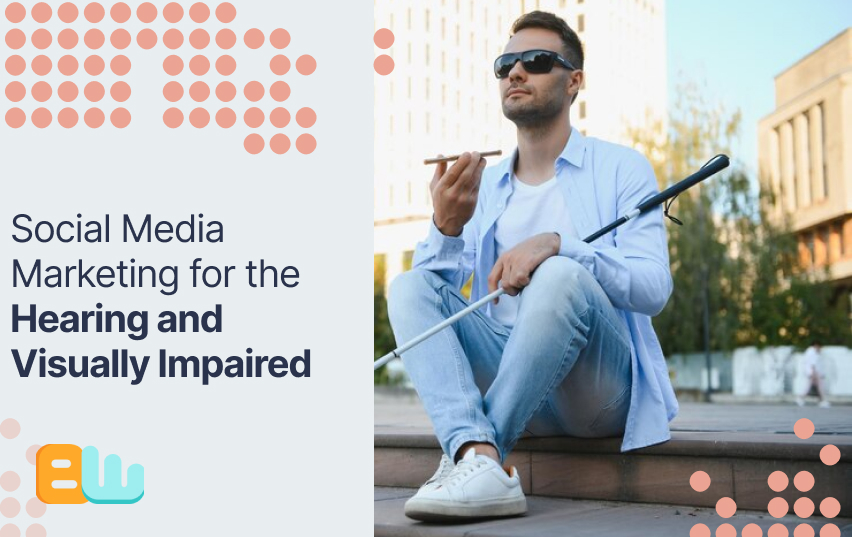
In today’s online world, social media is all around us. It is key to create accessible content. Both brands and people want to make digital content that keeps attention. This content must also be easy for everyone to use. This means considering those with visual impairments and hearing issues. By focusing on social media accessibility, we can make the internet a friendlier place for all.
Understanding Social Media Accessibility
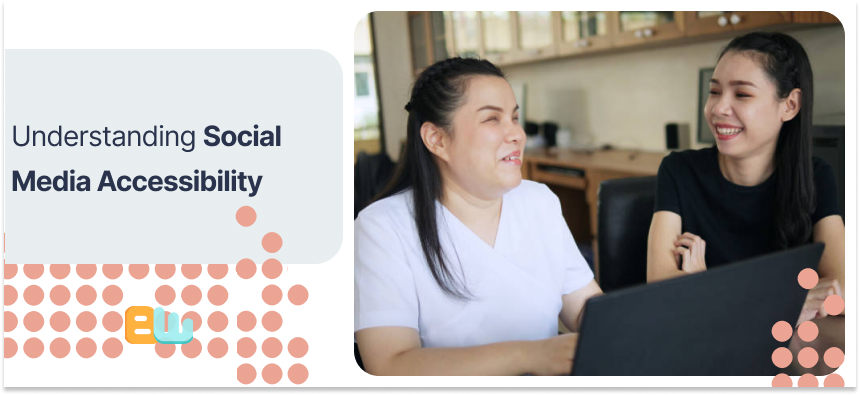
Social media accessibility means making online content easy for everyone to use. This is important for people with different disabilities. Some people may have trouble seeing, hearing, thinking, or moving. To make things better for them, we can take simple steps. For example, we should use alt text for images and add captions for videos.
Removing obstacles that don’t let individuals to engage and enjoy online content is the main goal of social media marketing for this specific group of people. Everyone can connect, learn, and participate in online discussions when social media is accessible.
Definition and Importance of Accessibility in Social Media
Social media accessibility means that all individuals should be able to use and any kind of social media content. For those who have difficulties in seeing, hearing, thinking, or moving, this is crucial. Accessibility in social media involves a number of helpful methods such captioning videos, giving transcripts for audio information, and adding text to images.
The importance of social media accessibility is very high. A good design helps us create a nice online space. In this space, everyone can enjoy content, connect with people, and join online groups. This also allows businesses to reach more people. It makes sure that their message gets to all.
Legislation Impacting Social Media Accessibility
Discrimination because of disability is prohibited in the United States according to Americans with Disabilities Act (ADA). Online spaces are also covered by this rule. Courts have determined that the ADA applies to websites and online platforms even though it does not specifically mention social media.
Businesses and organizations that use social media are significantly impacted by this rule. They may face legal problems if they disregard accessibility guidelines. Additionally, this circumstance can harm their reputation.
Challenges Faced by the Hearing and Visually Impaired on Social Platforms
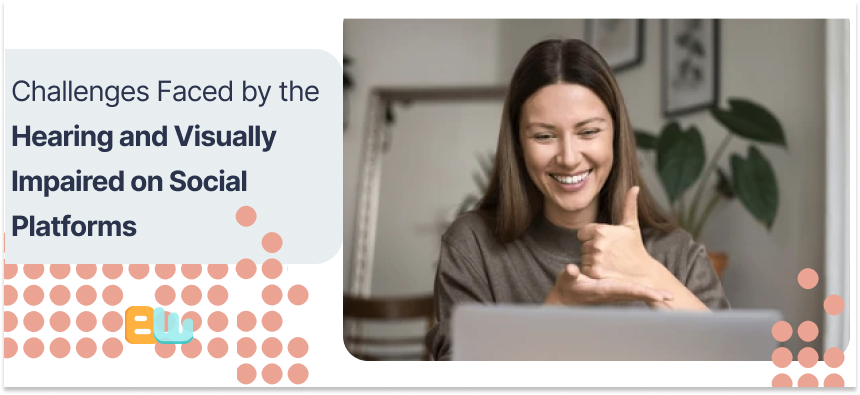
People with hearing and visual impairments face many challenges when using social media. A problem that looks small to some can feel huge for others. This can stop them from fully enjoying online content.
Many social media users face problems like not being able to hear funny videos. It can be hard to enjoy them without sound. Similarly, understanding an image without text can be challenging. These issues are common for people with disabilities who use social media.
Common Barriers for Visually Impaired Users
For people with visual disabilities, social media can be hard to use. A lot of features are not easy to reach. This can cause problems with images, videos, and text.
Many images do not have alt text. Alt text describes the image. This helps screen readers read it aloud. It is useful for blind users to know what the image shows. If there is no alt text, the images lose meaning and context.
Common Barriers for Hearing Impaired Users
Using audio content on social media might be challenging for those with hearing impairments. They can miss crucial videos, live feeds, and other types of audio if they don’t have the right support. One major issue with videos is that they often don’t have captions or subtitles.
Some platforms do have automatic captions, but they can make many mistakes. This is especially true with technical terms. It is difficult for people who use assistive devices, to enjoy podcasts and other audio content because they are not provided with transcripts. By fixing this problem, we can make social media better for those who have hearing difficulties.
Best Practices for Accessible Content Creation
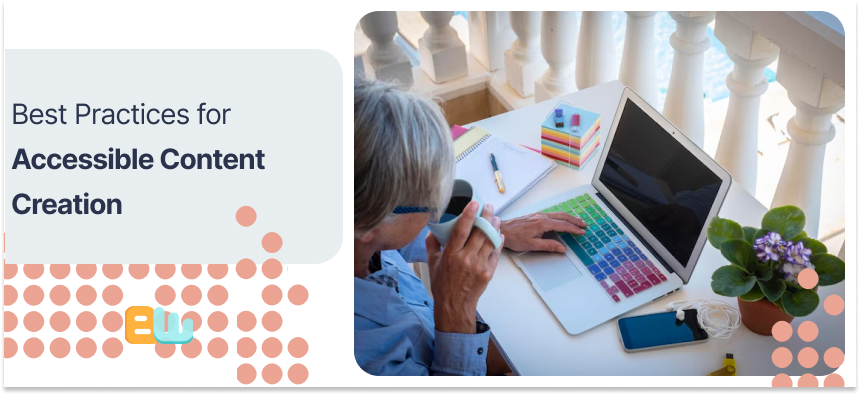
It takes more than just following the rules to make social media content simple for everyone. The goal is to ensure that everyone feels accepted. The good news is that it’s quite simple to use accessibility best practices.
Everyone can benefit from your social media content. Start by understandig the needs of users with disablities. Next, implement a few simple strategies to improve accessibility. More people will be able to appreciate your conten if you follow these steps.
Incorporating Alt Text for Images and Videos
Imagine coming across a beautiful image on social media, but being unable to see it clearly. This is a typical issue for those who are blind or visually impaired.
They use screen readers to understand digital content. You can provide a brief and straightforward description of the image on social media by using alt text. This feature will explain to screen readers the significance and meaning of the image.
Make sure your alt text is short and clear. Avoid using “picture of” or “image of” since screen readers are already aware that it is an image. Rather, explain what the image in about and how it relates to the text that follows.
For videos, think about adding a short summary of what happens. You can put this summary in the video description or in a separate comment. This way, you help everyone, no matter their eyesight, enjoy your content.
Using Subtitles and Closed Captions for Videos
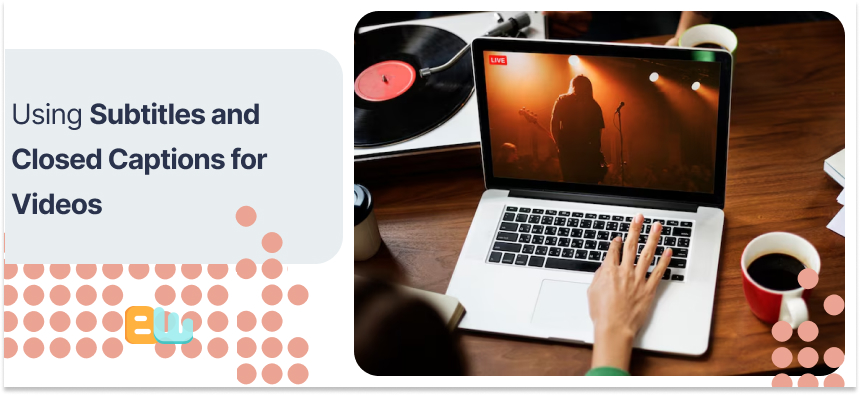
In today’s world of social media, video content is very important. However, watching videos with no captions or subtitles is difficult for people with hearing impairments. You can build new opportunities for those who might are not able to hear your message by including these features. Subtitles and closed captions give text versions of the audio. They show spoken words, sound effects, and music.
Ensuring Color Contrast and Font Accessibility
Good-looking content is really important for social media. But being easy to read is just as important. Some people are color blind or have vision impairments. As a result, some color schemes or font styles may be difficult for them to read.
Making your text clear and readable against the background is crucial. Dark text on a light background or light text on a dark background are both possible. You can make sure your information is readable by using a color contrast checker.
Choosing simple fonts is important. They help everyone read better. Avoid fancy or overly artistic fonts. They can be hard to read. When you use hashtags, use camel case. This means you capitalize the first letter of each word. For example, #AccessibleSocialMedia is much easier to read than #accessiblesocialmedia.
Advanced Accessibility Features and Tools
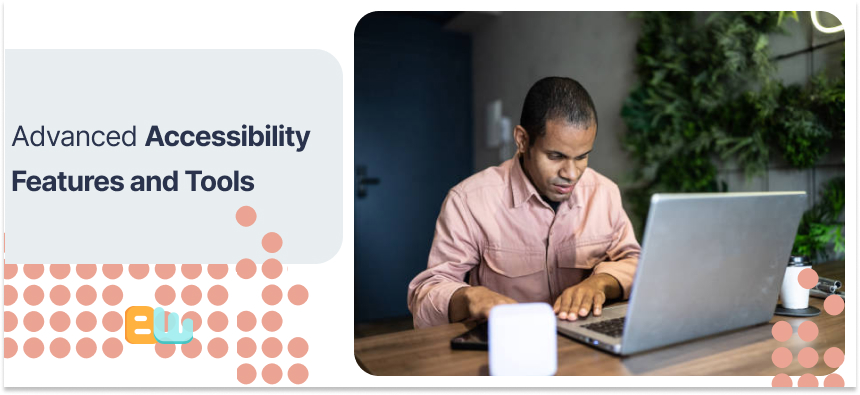
As technology gets better, tools for accessibility do too. Now, there are many choices available. AI-powered captioning services and voice recognition software help make social media content easier for everyone to access.
With these new tools, businesses and people can solve their problems. This allows their content to reach a larger audience.
Exploring AI and Machine Learning for Enhanced Accessibility
Artificial intelligence (AI) and machine learning are changing several parts of our lives. A key area is accessibility. In social media, AI tools make accessibility features better. This helps make content easy for everyone to use. One good example is AI-powered captioning. These tools can look at audio and video content. They make captions by themselves. This helps creators save a lot of time.
Utilizing Screen Readers and Text-to-Speech Technologies
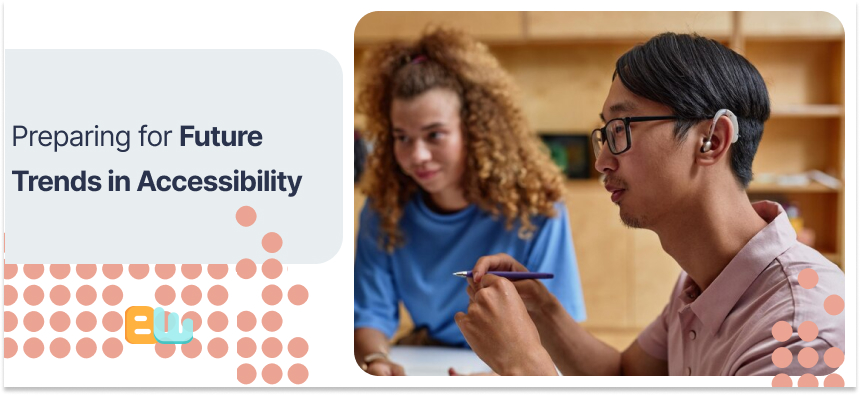
Text-to-speech tools and screen readers are essential for those who are visually impaired. Programs known as screen readers use a voice that sounds like a human and interpret text on the screen. This makes it easier for visually impaired people to use apps and websites without seeing the text. You can convert written text into audio with the help of text-to-speech technology.
Benefits of Accessible Design Software
Color contrast checker and other useful tools are typically included in accessible design software. These tools ensure that text and backgrounds stand out well from each other. Many of these software options provide font libraries that prioritize accessibility. This way, you can pick clear and easy-to-read fonts. They often include alt text generators or validators, too.
Preparing for Future Trends in Accessibility
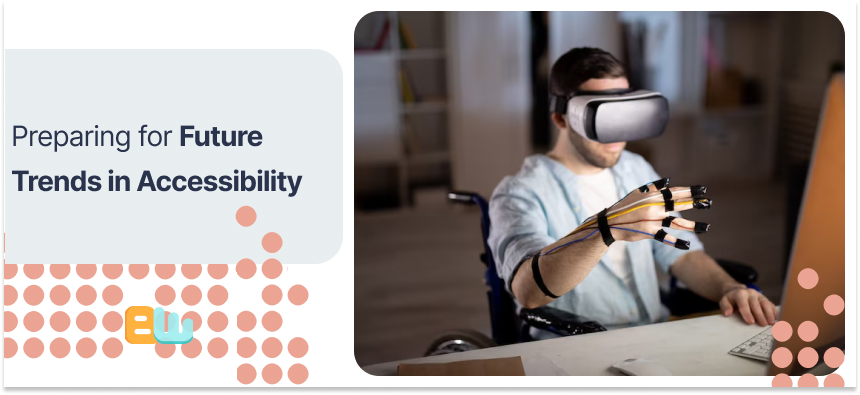
The digital world is always changing. Accessibility is changing too. Technology is improving, and what users expect is also evolving. It is important to keep up with the newest trends in social media accessibility.
We can keep making online experiences for everyone. We will use new technology, follow the laws, and talk openly with users.
Emerging Technologies and Their Potentials
The fast growth of technology makes social media more accessible to many people. Everyone can engage with digital content in different ways thanks to new technologies. For those who have disabilities, this is crucial as they can have better internet experiences while scrolling on social media.
Virtual reality (VR) and augmented reality (AR) are the exciting technologies to explore and learn about.These technologies facilitates navigation for those who are blind or visually impaired. As these technologies grow, we will likely discover new and creative ways to enhance social media and other fields. This will make them easier to use and open to everyone.
Predicting Changes in Laws and User Expectations
As technology advances, the rules about accessibility are updating as well. The importance of universal internet access is recognized by governments around the world. More strict guidelines and regulations are being developed for digital content on social media.
Individuals’ expectations are growing as more people become aware of accessibility’s meaning. Consumers are growing increasingly strict. They want to support businesses that show they care about accessibility. They understand that being accessible is more than just following the law. The goal is to make the internet a friendly and fair place for all users.
Conclusion
For those who have visual or hearing disabilites, social media marketing is crucial. Everyone can use social media more easily when accessibility features like alt text, subtitles, and AI tools are available. In order to build an environment that is really accessible, we must stay up to date with new rules and technologies. Taking advantage of these features enhances the experience for all users and benefits individuals who face disabilites. Together, let’s transform social media into a platform that makes easy communication and connection possible between users.
